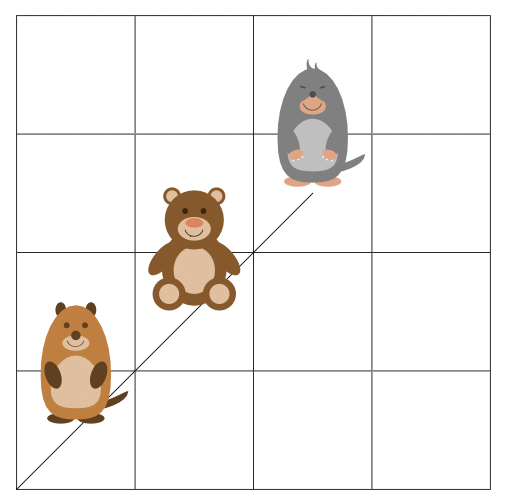Bob

I learned from Ulrike [here](https://tex.stackexchange.com/questions/616649/) that we can use `pic` for placing TikZlings, such as:
```
\documentclass{standalone}
\usepackage{tikzlings}
\tikzset{
marmot/.pic={\marmot},
bear/.pic={\bear},
mole/.pic={\moles}
}
\begin{document}
\begin{tikzpicture}[scale=2]
\draw(0,0) grid(4,4);
\draw(0,0) --++(0.5,0.5) pic{marmot}
--++(1,1) pic{bear}
--++(1,1) pic{mole};
\end{tikzpicture}
\end{document}
```

And Salim suggested we could use a box for storing in a node, such as by
```
\newbox\bearbox
\savebox{\bearbox}{\bear}
\draw(3,3) node {\usebox{\bearbox}};
```
The codes like `bear/.pic={\bear}` looks easy to add to the tikzlings package for all of them. Can we have this by default? Or when we use an option such as `\usepackage[pic]{tikzlings}`?
Second, could we have them as nodes, such as with the savebox? Or at least boxes done by default? If it's a resource issue, it could be selected such as by `\usepackage[nodes={bear,marmot}]{tikzlings}` so we can use then in drawings.
They are good for explaining things in diagrams and plots with callout shapes so having a way for positioning them would be great.
At least the `pic` way sounds like a quick benefit.
Thanks!
Top Answer
samcarter

I just added a TikZ library to version 1.0 of the TikZlings. It is already on its way to ctan or can be download from
https://raw.githubusercontent.com/samcarter/tikzlings/main/tikzlibrarytikzlings.code.tex
The usage is like this:
```
\documentclass{standalone}
\usepackage{tikz}
\usetikzlibrary{tikzlings}
\begin{document}
\begin{tikzpicture}[scale=2]
\draw(0,0) grid(4,4);
\draw(0,0) --++(0.5,0.5) pic{bear}
--++(1,1) pic[cat/body=red,scale=0.5]{cat}
--++(1,1) pic[thing/hat=red]{bear};
\end{tikzpicture}
\end{document}
```